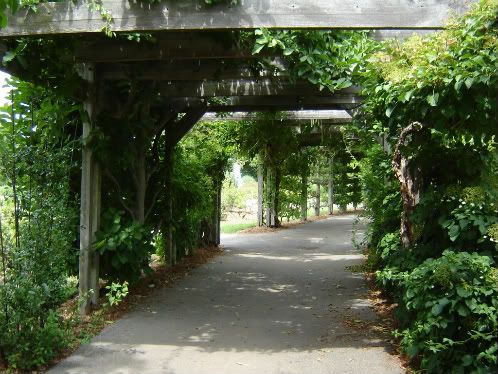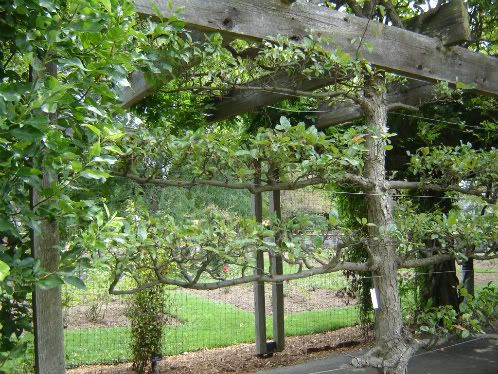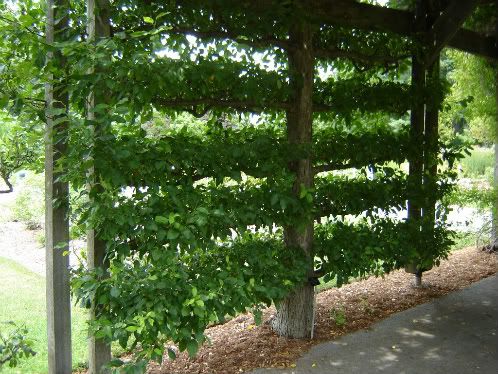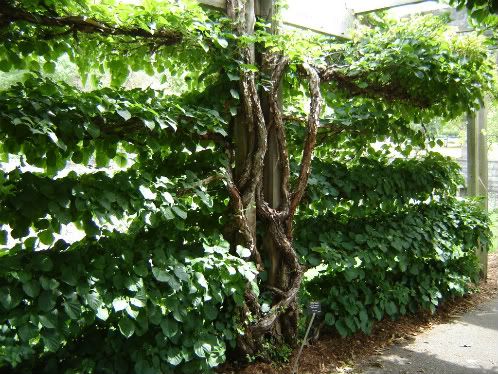 |
| Pergola in Hendrie Park, Royal Botanical Gardens |
 |
| Hendrie Park pergola, Royal Botanical Gardens |
 |
| Hendrie Park pergola, Royal Botanical Gardens |
 |
| Climbing hydrangea, Hendrie Park, Royal Botanical Gardens |
Whenever I see espaliers, it makes me nostalgic for my childhood home where my father trained dwarf apple trees flat against the south wall of our house in a formal design known as palmette verrier. Palmette verrier has the branches symmetrically forced straight horizontally, and then bent straight up vertically to form a design resembling a candelabra or Jewish menorah. Our trees produced an abundance of fruit, were decorative, and enhanced the wall in all four seasons.

No comments:
Post a Comment
I'd love to hear your comments